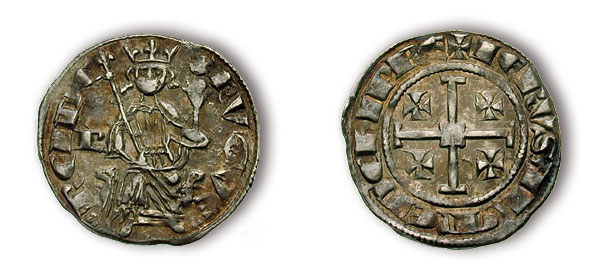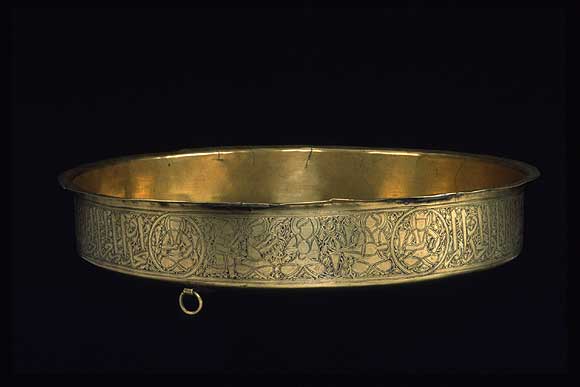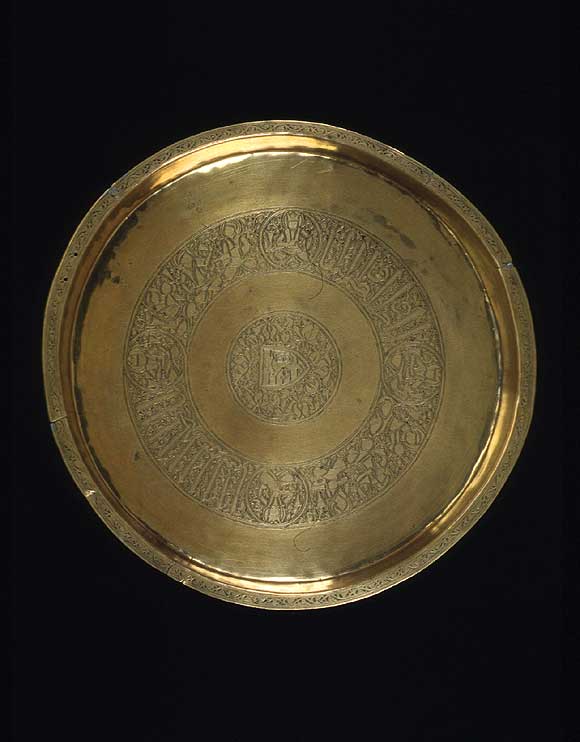|
|
 |
| The Reign
of Hugues IV |
| Armenia |
Asia Minor was at this time, divided between the Eastern Roman Empire and the kingdom of
Iconium (now Konya) under the Seljuk Turks. But, on the southern coast opposite Cyprus, separated from
the Turks by the Taurus mountains, lay the little kingdom of Armenia, the ancient roman
province of Cilicia, which had become an independent kingdom at the same time as the
Lusignans came to Cyprus.
 The populations was
comprised chiefly of Christian tribes which had taken refuge in the mountains when Greater
Armenia had fallen under the rule of the Seljuks. The Armenian church owed allegiance
neither to Rome nor to Constantinople, though its alliance was sought both by Pope and
Patriarch. The Armenian Catholicos, after a century and a half in Mesopotamia, took refuge
at Sis, and there founded an independent church at the close of the thirteenth century.
The main policy of Armenia was to secure independence against the Turks by obtaining money
from the West and arms from Constantinople. The populations was
comprised chiefly of Christian tribes which had taken refuge in the mountains when Greater
Armenia had fallen under the rule of the Seljuks. The Armenian church owed allegiance
neither to Rome nor to Constantinople, though its alliance was sought both by Pope and
Patriarch. The Armenian Catholicos, after a century and a half in Mesopotamia, took refuge
at Sis, and there founded an independent church at the close of the thirteenth century.
The main policy of Armenia was to secure independence against the Turks by obtaining money
from the West and arms from Constantinople.
The industry of Armenians made up for their lack of
natural resources. The inhabitants of this coast had of old been renowned as sailors,
whether as Cilician pirates against Pompey or as Kibyrraiot fleet of the Eastern Roman
Empire. They had now become industrious and successful traders by caravan and sea. Their
coast was protected by a series of castles, of which was the most important were Selefke
and Courico, while along their northern frontier lay the snowbound ranges of the Taurus.
The fortunes of this little kingdom were to be involved
ever closer with those of the Lusignans, until eventually the crown of Armenia was united
to that of Cyprus. The native dynasty of Armenia, which was founded by Leo I at about the
same time as the Lusignan dynasty in Cyprus, had maintained a precarious existence by
alternate alliances with Rome and Constantinople. The tenth king of the dynasty,
Oissim,
had assisted the brothers of Henri II of Cyprus in their conspiracies against him. Leo IV,
the last of the native dynasty, succeeded his father, Oissim, in 1320 and by the
intervention of the Pope made peace with the Lusignans, who sent him military aid against
the Sultan of Egypt. The whole reign of Leo IV was a continual struggle with the
Muslims
who were pressing him on every side, until his territory was eventually reduced to a few
mountain fortresses. He was assassinated in 1342, and with him the native dynasty of
Armenia came to an end. To succeed him the Armenians elected as king the son
of Hugues
IV, Guy de Lusignan (from his first marriage to Marie d'Ibelin), who thereby brought the Armenian crown into the Lusignan family. The
crown of Armenia, like that of Jerusalem, became a nominal title only and ended with the
fall of the Lusignan kingdom of Cyprus.
|
| |
| Accession
to the Throne |
With the accession of Hugues IV in 1324 begins the most
illustrious period of the Lusignan dynasty in Cyprus. He and his wife Alix d’Ibelin,
were crowned king and queen of Cyprus at Nicosia, and he afterwards received the crown of
Jerusalem at Famagusta. Shortly after the coronation the great cathedral of St. Sophia at
Nicosia was formally consecrated by the Latin archbishop, Jean del Conte. By the fall of
Acre, Cyprus had become of great importance in trade between Europe and the East. Commerce
with Muslim countries was never free from uncertainty. It was therefore essential to
security of trade that the merchants could establish their headquarters in towns under
Christian rule.
|

|

|
These
two objects from the period of King Hugues IV and
his wife Queen Alix d'Ibelin are housed at the Louvre
Museum
in Paris. The two objects made for Lusignans, belong to
the
remarkable production of bronzes encrusted with gold and
money financed by the Mamluks dignitaries. This order
expresses the privileged relations between Mamluks and
Lusignans after the loss of the last establishment in
Palestine, in 1291. |
After the fall of Acre and the other Christian ports of Syria, the
merchants of the great commercial communities of Venice, Genoa, Pisa, Marseilles and
Barcelona established themselves at Famagusta, which soon became one of the greatest
trading centres of the Mediterranean. The merchants of Famagusta were renowned for their
wealth. As an example, one of them is said to have given to his daughter as a wedding
dowry jewels more valuable than all the regalia of the queen of France.
But the trade in the eastern Mediterranean was hampered not only by
the hostility of the Muslims but by the policy of the Pope. With the object of weakening
the power of the Mamelukes, and so to assist a further crusade for the recovery of
Jerusalem, the Pope had placed under severe restrictions all trade between Europe and
Egypt.
 The prescription of the Pope, however, could not stop the commercial activities of
Venice and Genoa. They continued to run forbidden cargoes of military contraband to
Alexandria and Damietta in exchange for the merchandise of the East. This contraband trade
was kept in check by the galleys of Rhodes and Cyprus, so that the Lusignans, in carrying
out the policy of the Pope, were brought into conflict with the aims of Venice and Genoa.
This led to enmity between the maritime republics and the kingdom of Cyprus, and
eventually to the fall of the Lusignan dynasty. So long as the Pope was able to direct the
policy of Europe, the kingdom of Cyprus was supported by the Western Powers in the
interests of the crusades, but when the crusading spirit could no longer be aroused in
Europe, the Lusignans had no defence against the commercial aims of Genoa and Venice. The prescription of the Pope, however, could not stop the commercial activities of
Venice and Genoa. They continued to run forbidden cargoes of military contraband to
Alexandria and Damietta in exchange for the merchandise of the East. This contraband trade
was kept in check by the galleys of Rhodes and Cyprus, so that the Lusignans, in carrying
out the policy of the Pope, were brought into conflict with the aims of Venice and Genoa.
This led to enmity between the maritime republics and the kingdom of Cyprus, and
eventually to the fall of the Lusignan dynasty. So long as the Pope was able to direct the
policy of Europe, the kingdom of Cyprus was supported by the Western Powers in the
interests of the crusades, but when the crusading spirit could no longer be aroused in
Europe, the Lusignans had no defence against the commercial aims of Genoa and Venice.
|
| |
| Ottoman
Turks |
But a new danger was threatening from Asia Minor. The Ottoman Turks, a tribe of Turcomans
who had settled in Iconium at the end of the thirteenth century, were rising to the power
by means of their powerful army of jannisaries, a force recruited from Christian children
taken from their homes and trained to fight for the Turks.
The Ottomans threatened the remnants of the Byzantine empire, the
Knights of Hospitallers of Rhodes and the Lusignan kingdom of Cyprus. In 1344 a league was
formed by the Pope between the various powers threatened by the Turks, and Venice, anxious
about her trade in the Aegean, lent her support. The combined forces of Cyprus, the
Hospitallers and the Venetians concentrated in the Aegean to oppose the Ottoman power.
They attacked and burnt the Turkish fleet in Symrna, took the town by assault and placed a
garrison in it; Symrna remained in Christian hands for more than fifty years. Next year
King Hugues, with the help of the Hospitallers, destroyed a Turkish fleet in the harbour
of Imbros and defeated the Ottomans on the mainland. But, when great results seemed to be
in sight, the League collapsed by the unexpected withdrawal of the king of Cyprus. He
probably realised that these foreign expeditions were of little benefit to his kingdom of
Cyprus. In vain the king of Armenia, his kinsman and neighbour, appealed for help against
the attacks of Egypt. King Hugues retired to Cyprus and devoted himself to the internal
affairs of the island, which prospered under his rule. He also devoted much of his time to
literature, and to him the great Italian writer Boccaccio dedicated his book -Genealogy of
the Gods- a treatise on mythology.
In 1349 the Black Death, the great plague that ravaged all
Europe, fell with especial fatality on Cyprus. The king was obliged to retire for safety
to the mountain castle of St. Hilarion, trade almost ceased, and the loss of life was so
great that after the plague the king had to recruit the ranks of the nobles by conferring
titles on the merchant class. King Hugues IV, before his death in 1359 abdicated in favour
of his second son, Pierre, who was crowned king of Jerusalem and Cyprus in 1358.
|
|
|
|
|
| References:
|
- From:
Newman, P., (1940), "A Short History of Cyprus",
Longmans, Green & Co., London.
|
|
Chronological
History |
|
 |
|









